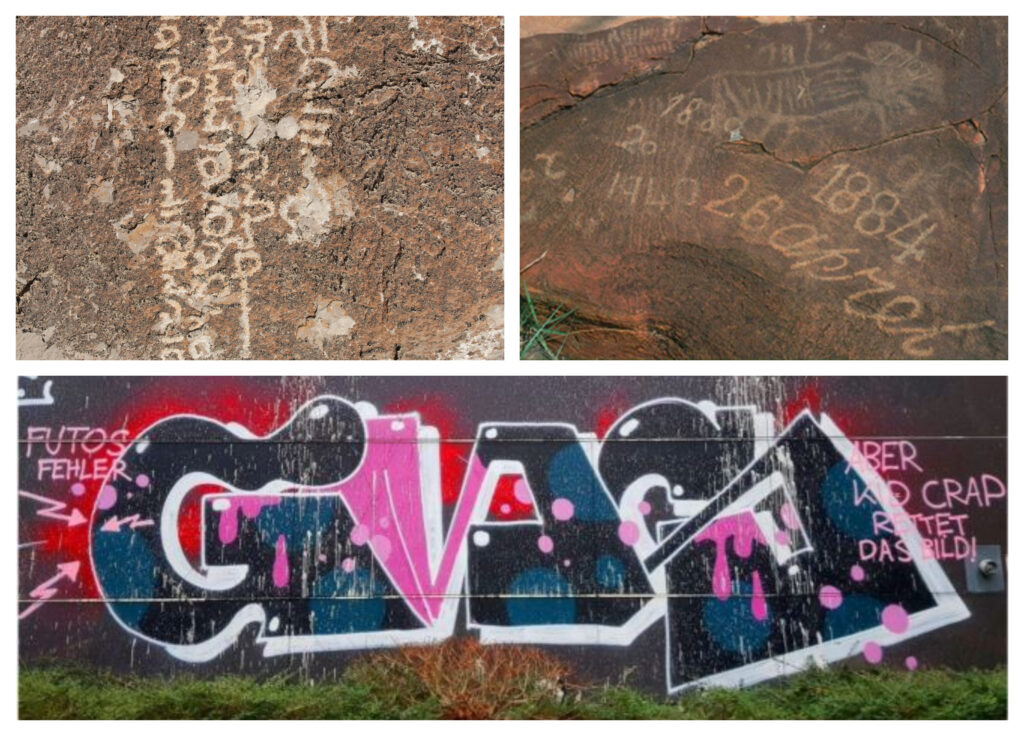Scratched, Scrawled, Sprayed… and Drawn: Multigraphic Graffiti Across Times and Cultures
One of the most striking features of graffiti is their multigraphic nature. Graffitists, whether in ancient or modern times, have often felt the need to involve more than one sign system. A pierced heart by a lover, a gameboard on the temple steps – images, symbolic, and diagrammatic signs share the space with written graffiti worldwide. In some cultures, pictures outweigh the amount of text. Pictorial elements are integral to our understanding of graffiti as a universal practice.
This workshop explores graffiti as written artefacts that undogmatically use different modes of representation. By highlighting both textual and pictorial elements and their relation to each other, we aim at overcoming the separate treatment or lack of attention that resulted from a division of labour among the ‘textual’ and ‘visual’ disciplines. In what kind of dialogue have different cultures engaged these two modes of expression? How can the evidence be categorised, documented, and analysed? A series of case studies will address these questions, showcasing evidence from ancient Nubia to contemporary Australia.
For the programme with abstracts and to register, please follow this link: https://www.csmc.uni-hamburg.de/register-workshop8.html
PROGRAMME
First Session: 01:00 pm–02:30 pm
Chair: Michael Macdonald (Oxford)
01:00-01:10 Michael Friedrich (Hamburg): Introduction and opening remarks
01:10-01:50 Sven Ouzman (Perth): Prose Has Its Cons: An Archaeological Understanding of Graffiti as Material Culture – Lessons from the Global South
01:50-02:30 Polly Lohmann (Heidelberg): Seeing and Being Seen? Visibility, Affordance and the Roman ‘Graffiti Habit’
02:30-02:45 Coffee break
Second Session: 02:45 pm–05:00 pm
Chair: Mia Trentin (Nikosia)
02:45-03:25 Carlo Giovanni Cereti (Rome): Graffiti in the Iranian World: An Overview of the Middle Iranian Evidence
03:25-04:05 Adam Łajtar (Warsaw): Devotional Graffiti in Christian Nubia. Two Case Studies: Banganarti and Sonqi Tino
04:05-04:45 Alexey Kirichenko (Moscow): Beyond the Programmed? Multigraphic Content in Buddhist Monuments of Upper Burma
04:45-05:00 General discussion and concluding remarks
For further questions, please contact: malena.ratzke@uni-hamburg.de

Upper right: Indigenous southern African rock engravings and colonial settler/invader graffiti, 19th–20th c. CE. From central South
Africa. Photo by Sven Ouzman.
Bottom: GMS Crew, undated. Hamburg, building of Staats- und Universitätsbibliothek: “Futo’s mistake, but Kid Crap saves the piece!”. Photo by Malena Ratzke.

